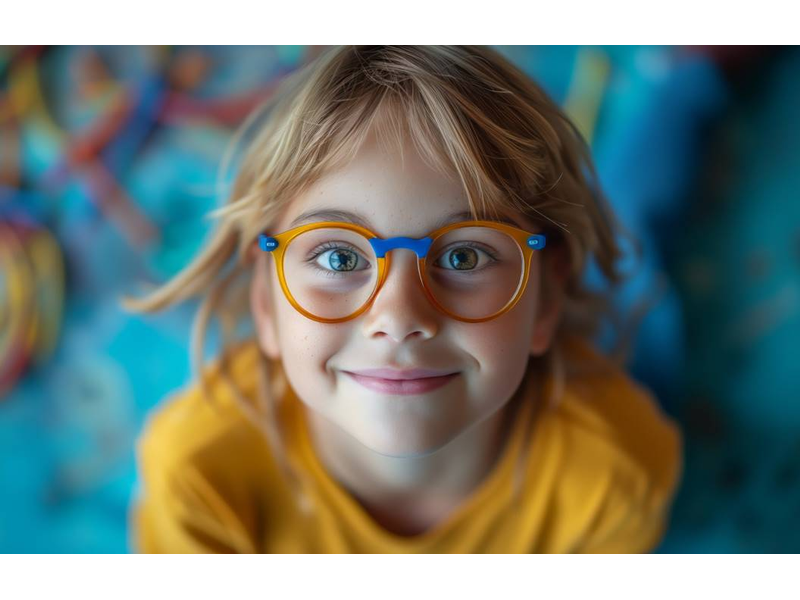Approaching Myopia Holistically: Behavioral Optometry Offers Hope
Jul 31, 2024 09:31AM ● By Dr. Samantha Slotnick
Natural Awakenings Westchester, Putnam, Dutchess NY
In Print: August 2024 issue, featured article
For this and additional clinical information, see our website for Mind-Body-World Optometry.
August is Children’s Vision and Learning Month, an excellent time to consider whether
our children have the visual skills needed for school. The World Health Organization reports that myopia (nearsightedness) prevalence is rising worldwide—currently affecting more than one in three children in the United States. Myopia progresses due to an imbalance in how we use our visual process. The quintessential “bookworm” depiction of a person wearing glasses aptly represents what happens when one reads for long hours.
Unfortunately, myopia is not just a visual concern; it carries a very high risk of retinal detachment—29 times higher in patients with myopia than in those without. Many people assume that myopia progression is purely hereditary. Epidemiology does show an increased risk for myopia development with myopic parents: risk increases threefold with one myopic parent and eightfold with two. However, epidemiology does not account for the nature-nurture question.
Progression and Intervention
Myopia progression is impacting children at a younger age than ever before, largely due to the increase in screen use. It tends to worsen after intense periods of near-point activity. By the time children are identified as having reduced distance vision in a school screening, they are often already several steps into myopia development.

However, warning signs for myopia onset can be identified and addressed with a thorough functional visual evaluation. By detecting changes in focusing flexibility and a tendency to lean into visual material, we can predict and often prevent myopia onset and progression. At these telltale warning signs, appropriate near-point glasses guide the child to reorganize intense visual habits. This may be complemented with targeted visual activities to retrain the child on gentler focusing and eye-teaming skills, promoting long-term visual flexibility.
Myopia and Pandemic Impacts
The concern about increasing myopia in children is well-justified, especially with our increasing use of screens at younger and younger ages. Recent studies have shown a rapid increase in myopia developed during the pandemic since vision use became more skewed. Not only did a higher amount of educational time depend on screen interfaces at near-point, but there was also been a reduction in activities to engage visual attention at a distance, especially outdoors. Before the pandemic, distance viewing activities in a classroom helped children maintain a more balanced use of their vision, keeping myopia in check for many youngsters.
The Role of a Behavioral Optometrist
Behavioral optometrists take a holistic approach to vision care, identifying the habits and factors that promote myopia. How a child engages with visual material at near-point is critical. Children who lean in too close to their reading material or screens are at increased risk of developing myopia.
A behavioral optometrist’s first priority is to ensure that a child has optimal visual support for near-point activities rather than for distance viewing. Once a child’s main source of visual stress is addressed, then the optometrist can determine whether a different lens power is needed for distance viewing.
A Holistic Approach to Treatment
Treatment options for myopia may include stress-reducing lenses for near-point and computer work, bifocal glasses to manage the distance-and-near demands of the classroom, and even multi-focal contact lenses to reduce myopia progression. Other options, including pharmaceutical intervention and specialized hard contact lenses for myopia control, may also be considered.
A behavioral optometric approach not only helps stabilize progression in children who are just beginning to develop myopia but, in some cases, reversal of myopia may even be seen. With timely assessment and intervention, it is possible to keep children ahead of trouble using prevention techniques. Children can—and do—regain clear distance vision without dependency on glasses or contact lenses when a whole-body wellness approach to prevention, evaluation and treatment is utilized.
Dr. Samantha Slotnick is a behavioral optometrist. Her practice, Mind-Body-World Optometry,
is located at 495 Central Park Ave., Ste. 301, in Scarsdale. For more information or to make an appointment, call 914-874-1177 or visit DrSlotnick.com.



Leave a Reply